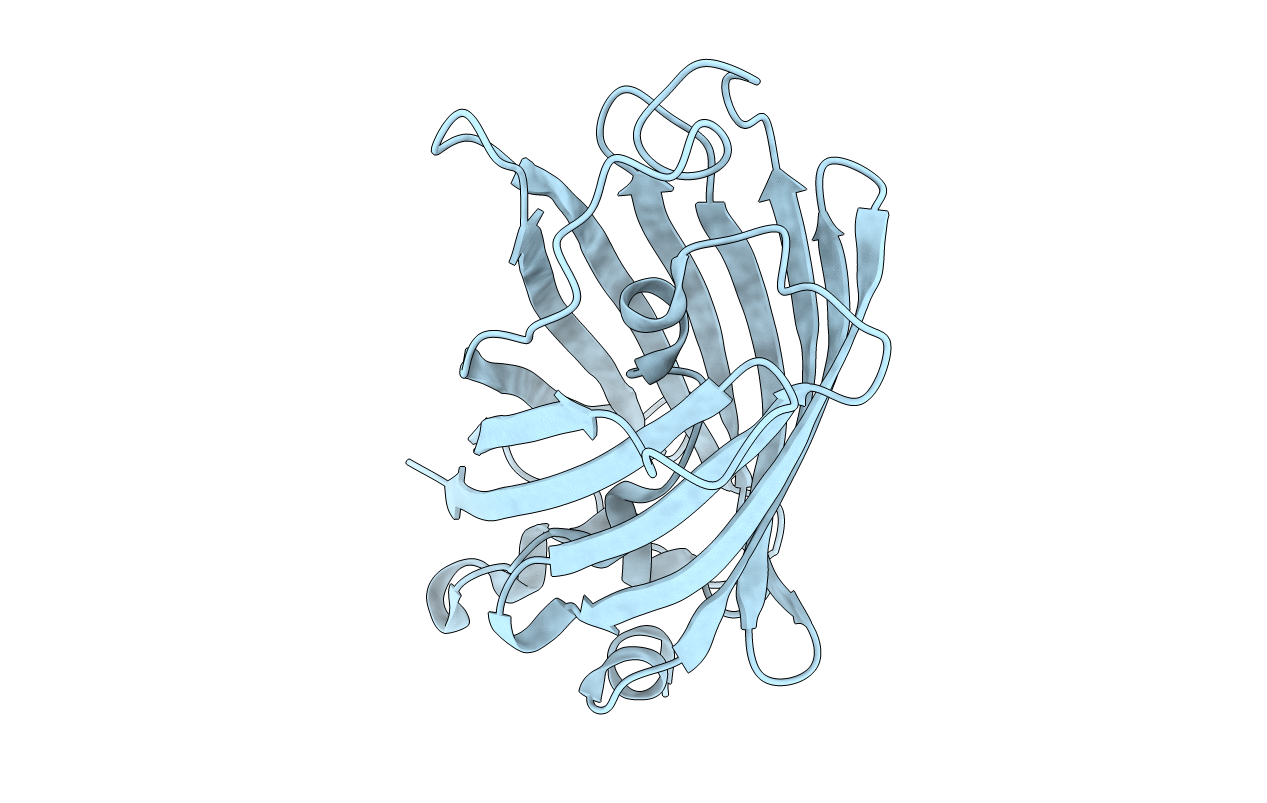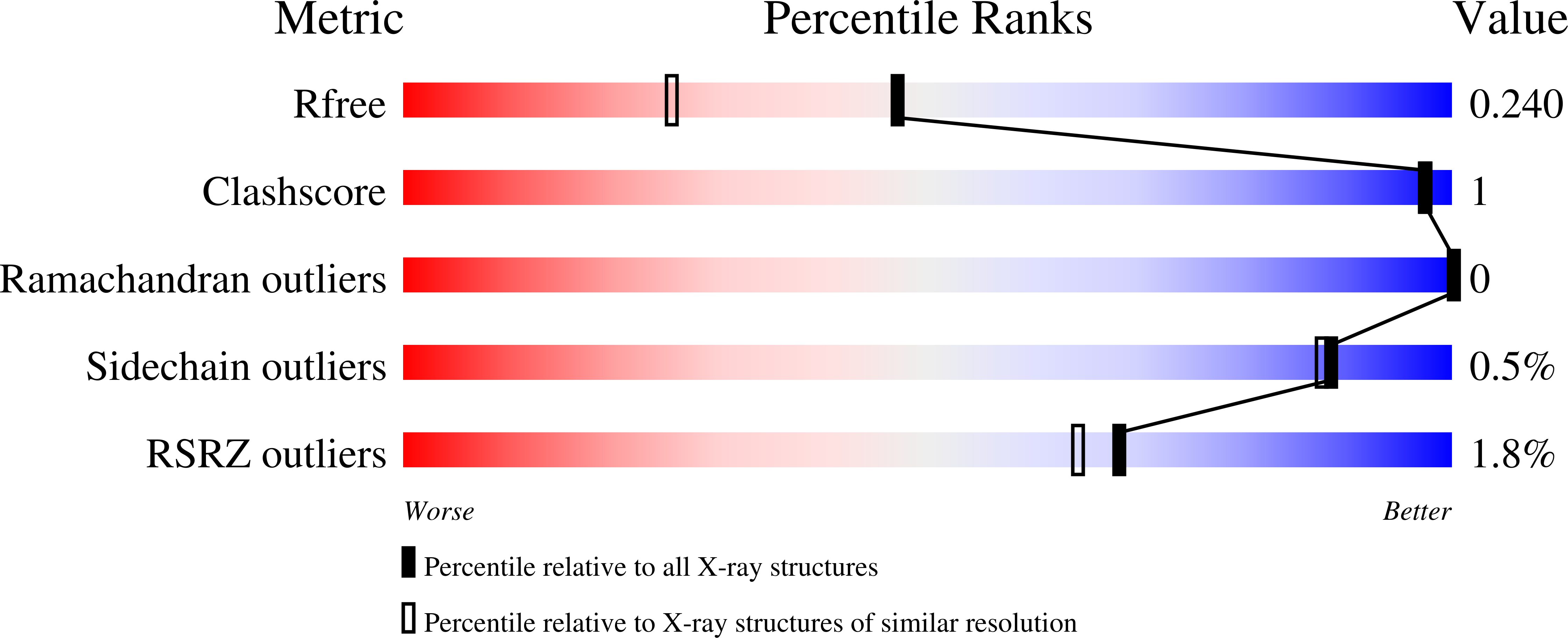
Deposition Date
2018-01-26
Release Date
2019-02-06
Last Version Date
2024-11-20
Entry Detail
PDB ID:
6FLL
Keywords:
Title:
SPECTROSCOPIC AND STRUCTURAL STUDY OF QW, A EGFP MUTANT SHOWING PHOTOSWITCHING PROPERTIES
Biological Source:
Source Organism:
Aequorea victoria (Taxon ID: 6100)
Host Organism:
Method Details:
Experimental Method:
Resolution:
1.79 Å
R-Value Free:
0.23
R-Value Work:
0.20
R-Value Observed:
0.20
Space Group:
P 21 21 21


